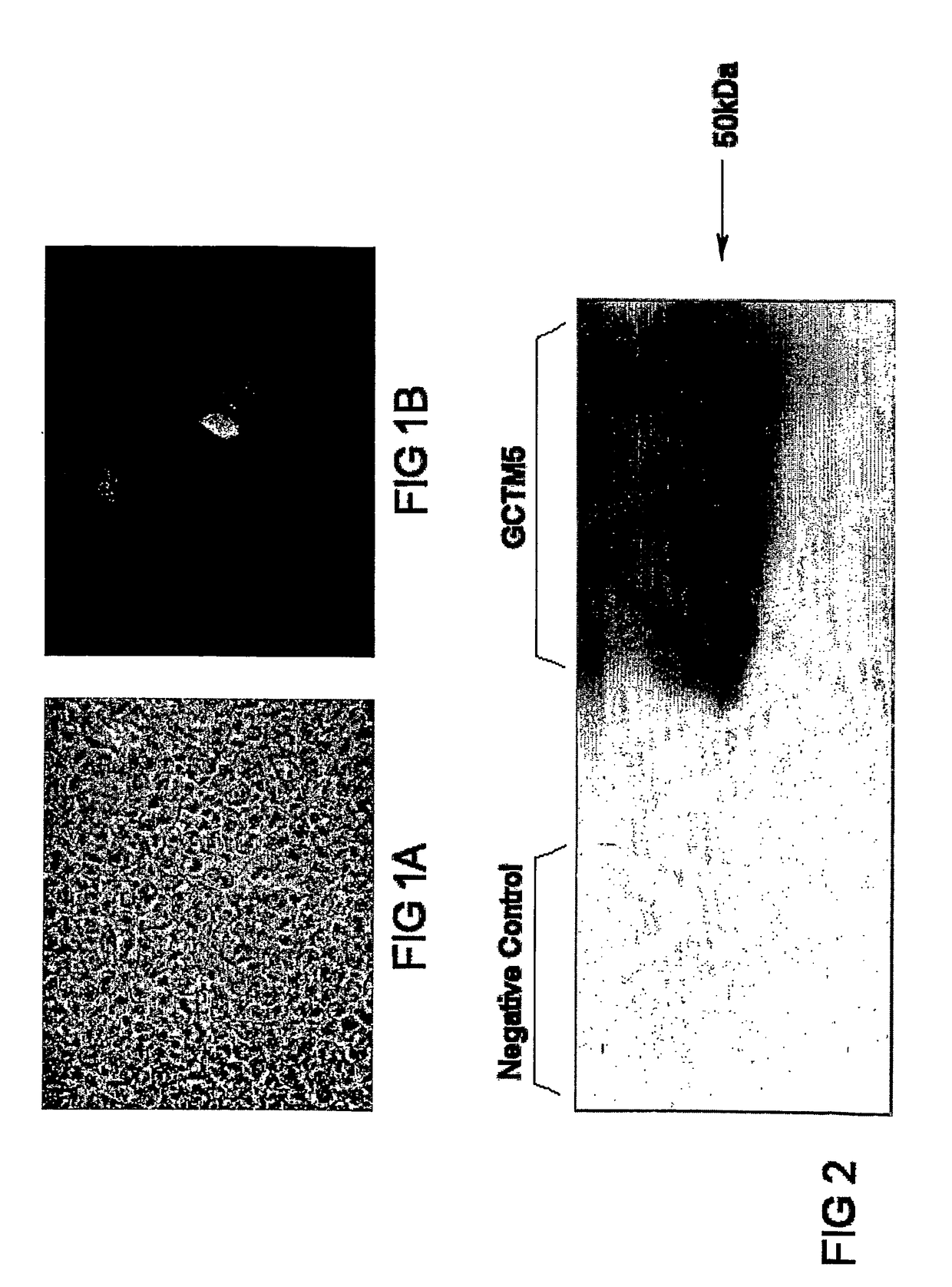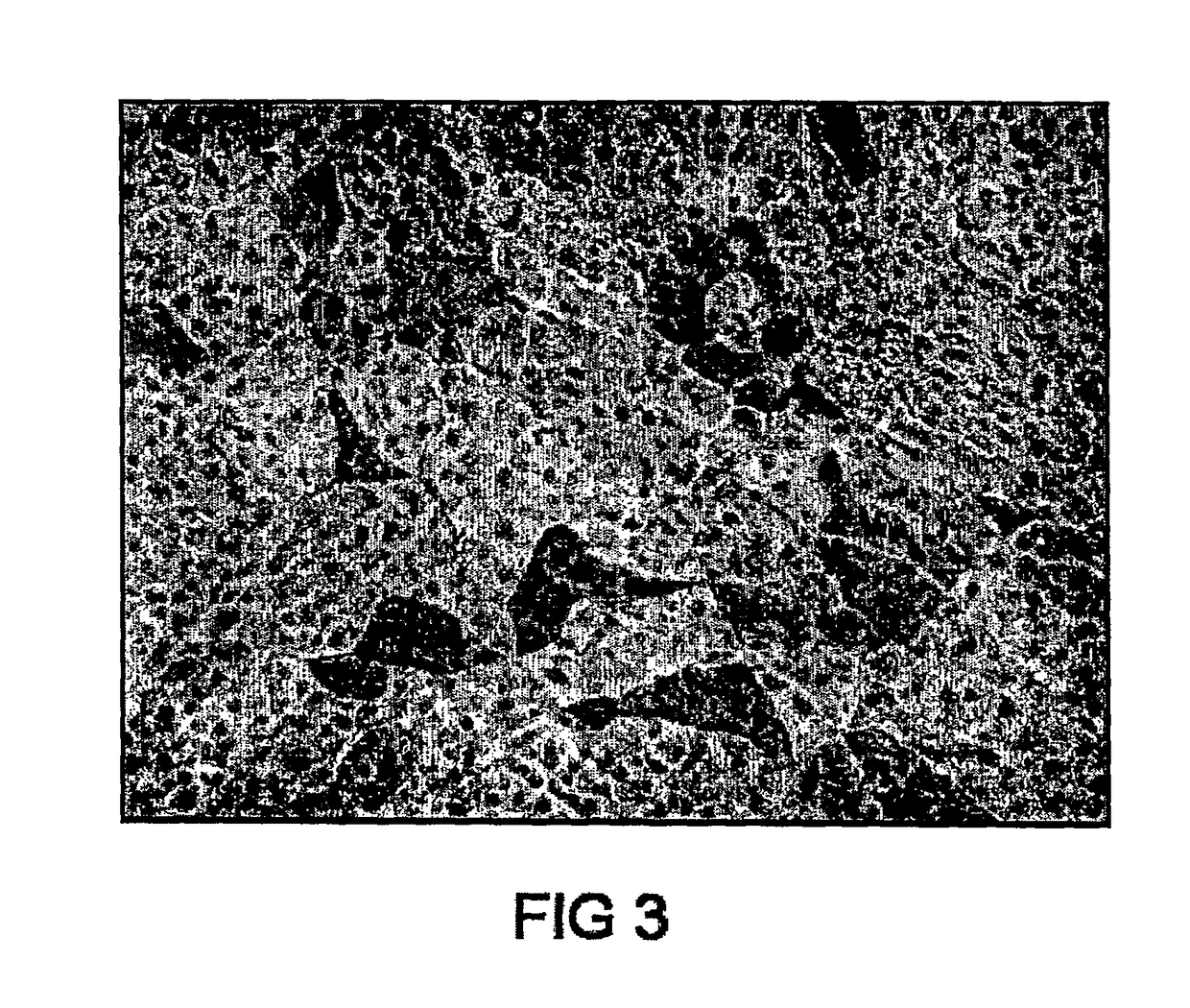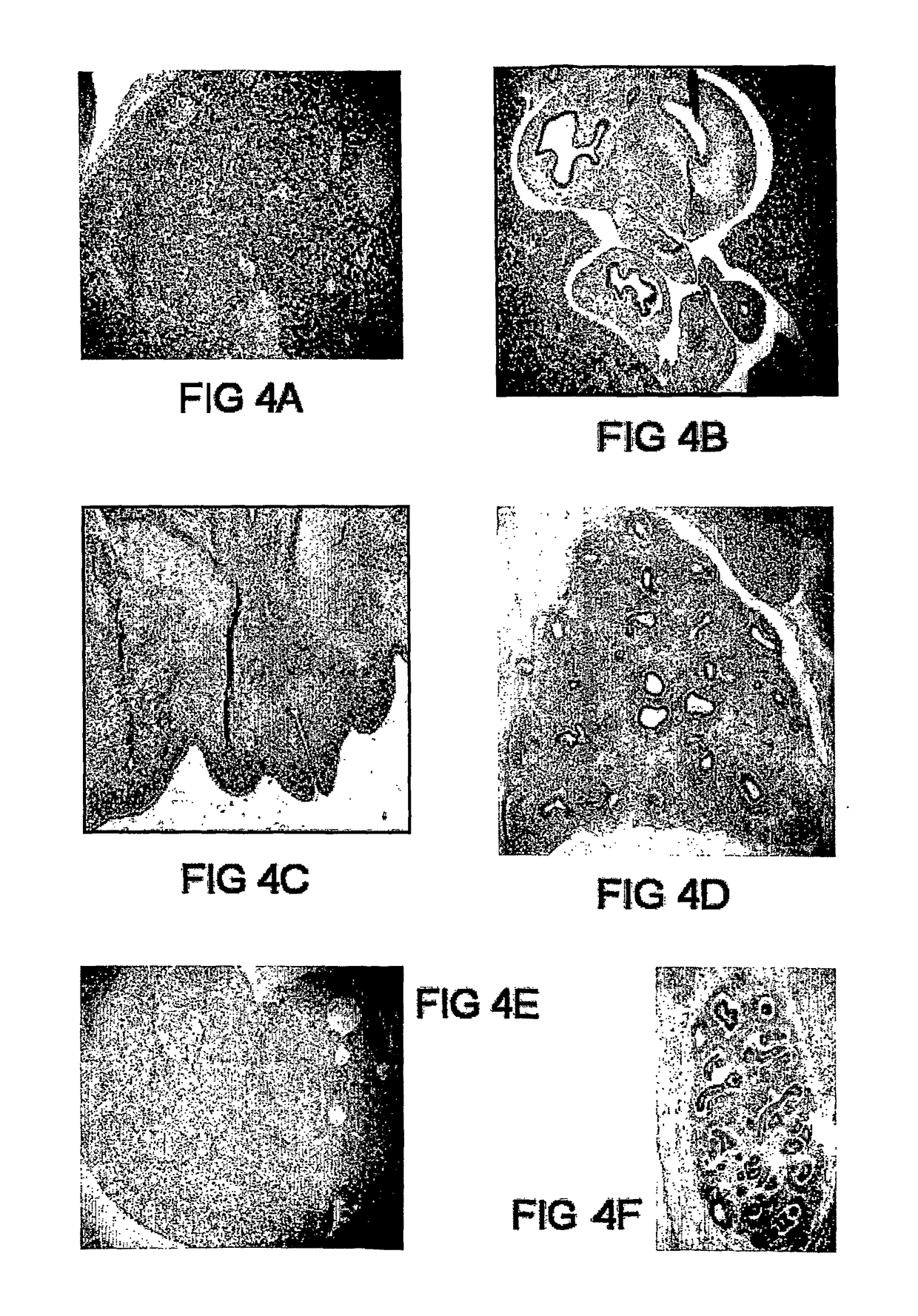Cell marker for hepatic and pancreatic stem cells and progenitor cells
a technology for hepatic and pancreatic stem cells and progenitor cells, which is applied in the direction of peptides, peptides, and injected cells, etc., can solve the problems of difficult to study these cells in isolation and use, and the nature of stem cells or stem cells that repopulate the adult liver remains controversial
- Summary
- Abstract
- Description
- Claims
- Application Information
AI Technical Summary
Benefits of technology
Problems solved by technology
Method used
Image
Examples
example 1
Derivation and Characterisation of Antibodies from Hybridoma Culture
[0136](a) Derivation of GCTM-5 Antibody
[0137]Female BalbC mice of 4-6 weeks of age were immunised with a crude membrane preparation from a testicular seminoma. Fresh tumour tissue was disrupted by Dounce homogenisation, and the homogenate was first subjected to low speed centrifugation at 3,000×g to remove nuclei, mitochondria, cytoskeletal elements and debris, then high speed centrifugation at 100000×g for one hour. The resulting pellet was used for immunisation. Fusion with myeloma cell line NS-1 and subsequent selection of hybridomas was carried out using standard techniques. Hybridoma supernatants were first screened by antibody capture ELISA using the immunising membrane preparation. Secondary screening was performed using either immunocytochemistry on fixed or frozen sections of seminomas, or by indirect immunofluorescence on fixed slides of cultured embryonal carcinoma cell lines including GCT27X-1 (FIG. 1).
[...
example 2
Characterisation of Antigen Recognised by GCTM-5 Antibody
[0148](a) Immunoblot Analysis of GCTM-5 Antigen
[0149]Differentiating cultures of human embryonal carcinoma (GCT27X-1) or embryonic cells were grown in 12-well plates. Cells in 4 wells of a plate was lysed with Laemmli sample buffer containing 0.2M dithiothreitol (DTT). A sample of cultured biliary epithelial cells, isolated from a patient with primary biliary cirrhosis using antibody HEA-125 and maintained in primary culture for 10 days, was also lysed into Laemmli sample buffer. The sample was run on a 10% SDS polyacrylamide gel with a BENCHMARK Prestained Protein Ladder (Invitrogen, Victoria). The protein was then transferred to Hybond-P membrane (Amersham Biosciences, Australia) and membrane blotted with GCTM-5 antibody(neat), or CAM5.2 (BD Biosciences, Australia) against CK8 and 18 (BD Biosciences, Melb, Vic, AU) as a positive control for the cell preparation. An anti-mouse Ig conjugated to horse-radish peroxidase (HRP) se...
example 3
Staining of Human Foetal Sections
[0160](a) Foetal Tissue
[0161]Histological sections of first trimester human embryos were cut from archival material obtained with informed consent from patients undergoing termination of pregnancy at the John Radcliffe Hospital, Oxford, UK. The tissue was fixed in absolute alcohol, embedded in paraffin, and sectioned at 5 μM thickness.
[0162]Paraffin embedded human foetal sections for immunohistochemistry were ‘de-waxed’, fixed and rehydrated. Two 5 minute incubations were made in the citrus-based clearing agent Histolene (Merck, Victoria). The tissue was fixed and rehydrated with two 5 minute incubations in 100% ethanol, followed by 5 minute incubation in 70% ethanol and 5 minutes in running water. The human foetal tissue sections were incubated with neat GCTM-5 antibody supernatant before addition of an anti-mouse Ig conjugated to Alkaline Phosphatase (AP) (Dako, NSW). The visualisation of the secondary antibody involved detection of AP activity wit...
PUM
| Property | Measurement | Unit |
|---|---|---|
| molecular weight | aaaaa | aaaaa |
| molecular weight | aaaaa | aaaaa |
| molecular weight | aaaaa | aaaaa |
Abstract
Description
Claims
Application Information
 Login to View More
Login to View More - R&D
- Intellectual Property
- Life Sciences
- Materials
- Tech Scout
- Unparalleled Data Quality
- Higher Quality Content
- 60% Fewer Hallucinations
Browse by: Latest US Patents, China's latest patents, Technical Efficacy Thesaurus, Application Domain, Technology Topic, Popular Technical Reports.
© 2025 PatSnap. All rights reserved.Legal|Privacy policy|Modern Slavery Act Transparency Statement|Sitemap|About US| Contact US: help@patsnap.com



